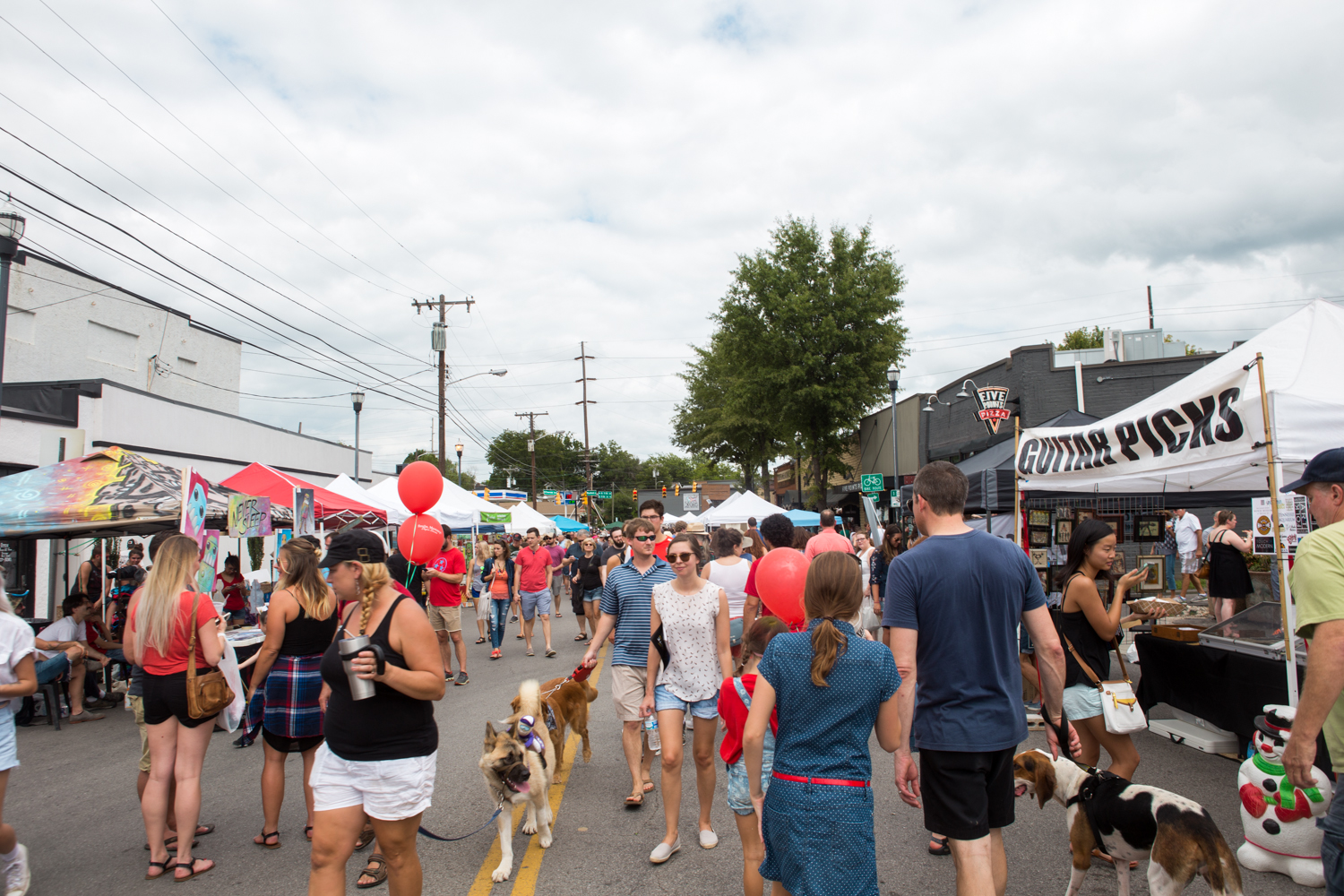East Nashville
East Nashville lies across the Cumberland River from downtown – a bohemian enclave for artists, musicians and – more lately – upwardly mobile professionals who are soaking up its hipster lifestyle. The community emanates from Five Points – the intersection of Woodland Street, Clearview Avenue and North 11th Street – and pours out to the east. An eclectic mix of businesses, splashes of neon bright colors, line the main boulevards and side streets.“When I opened my store on Forrest Avenue (in 1999), there was nothing here,” marvels Trisha Brantley, 47, the owner of Hip Zipper, the first vintage store to open in East Nashville. “It’s as if someone put a nuclear-sized drop of Miracle Grow on us and we haven’t stopped growing.”Like downtown Nashville, East Nashville has boomed in the last decade, although outwardly so more than straight up. People live in the sub-hoods of East End, Edgefield, Lockland Springs, Greenwood and Inglewood – anything within the 37206-37216 zip codes – streets that ooze with coolness. It’s an area buzzing day and night with restaurants and cafés tucked into former gas stations and tool dye shots, along with microbreweries, pizza joints and vintage clothing shops. Perhaps no other Nashville neighborhood better represents the dramatic growth and change of the city.One of the defining aspects of that growth was a cataclysmic event that gave residents and developers the opportunity – for better or worse – to buy or rebuild properties. The tornadoes of 1998 that came through changed everything. I personally feel it’s what got the ball rolling residentially,” says Brantley.
“When I moved here 20 years ago, Sobro (downtown) was the neighborhood to be,” says Andy Mumma who owns Barista Parlor on Gallatin Avenue in what was formerly George’s Transmission Shop.
“As everyone got priced out, they began looking to East Nashville. It was affordable and edgy with beautiful Victorians and bungalows, a great place for young artists and musicians to live and work in home studios.
“The architecture creates a great vibe in which to both live and work,” Mumma says. Another drawing card is the bike-friendly, walkability of the neighborhoods and the close proximity to downtown, Brantley adds. “People can walk or bike to so many shops and restaurants. And it’s relatively safe. There’s a real sense of being able to commute without having to get in your car.”
With explosive growth, of course, comes the downside of any growing community: rising house prices, traffic congestion, a lack of street parking and a slow erosion of the culturally diverse character of the community as those who can no longer afford the rising rents move on. What began with an influx of unpretentious, pioneering twenty-something artists and musicians has given way, over the last eight years, to more affluent local residents, says Brantley. Homes prices have nearly tripled. There are still deals to be found in East Nashville for those willing to search for them, says Mumma.






